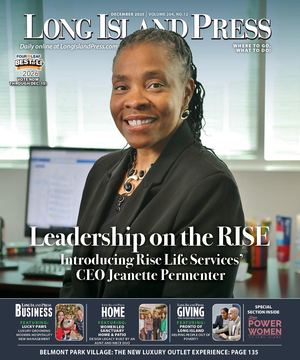A recently updated version of the Long Island Zoning Atlas goes a long way in explaining the housing shortage on Long Island.
The map and accompanying study created by The Center for Urban Research at the CUNY Graduate Center and Community Development Long Island shows that only 8.5% of zoned land not within environmentally protected areas allows two-family housing and only 3.6% allows three-family and four-or-more family housing.
Zoning ordinances prohibit, as of right, two-family housing across almost 92% of Long Island’s buildable land. while three- or four-plus-family housing is prohibited throughout more than 96% of this area. In Nassau County, multifamily housing is as of right in less than 10% of the region.
This means that if a developer wants to build anything but a single-family home in Nassau County, they must ask a village or town government to agree to a zoning variance after what is usually a long, time-consuming, and expensive process — that the village or town government might reject.
Some say this not by accident.
“Our exclusionary zoning regime was designed 100 years ago to prevent the construction of affordable or multi-unit housing,” said Ian Wilder, an attorney who leads Long Island Housing Services, a nonprofit that works with government agencies, corporations, and individuals on fair housing.
This regime is still in place and it is not good for the county’s economic health.
“Some multi-unit housing can be built under exclusionary zoning, but only a small fraction of what is needed,” Wilder said. “If we continue on this path, we will hollow out our economy and lose political power as states that are building multi-unit housing will attract workers and will increase their congressional representation.”
The housing shortage in Nassau County has driven many people out of the state. It has also hurt local businesses’ ability to attract new employees, homeowners who want to downsize but still live in Nassau, and young professionals who want to move here.
Cara Longworth, regional director of Albany’s Empire State Development, recently said that between 2009 and 2019, the Island lost 98,000 people between the ages of 35 and 55, the prime working age.
“That’s impacting our companies,” Longworth said. “In the last 20 years, we’ve created 62,000 more jobs than housing units.”
Matt Cohen, the president and CEO of the Long Island Association, a non-profit that advocates for businesses, has said that housing costs and availability continue to challenge Long Island’s economy, making it difficult to attract and keep talented employees.
The obvious solution for this problem is for villages and towns to update their zoning laws to permit multi-family construction as of right in certain areas, such as near LIRR train stations.
There is precedent for this.
The villages of Mineola and Farmingdale have both succeeded in revitalizing their communities by making zoning changes. This did not happen overnight. A key to their success has been elected officials willing to work with their communities to develop a plan. The Town of Oyster Bay has done this in Hicksville.
All three municipalities were recognized for projects at the Long Island Smart Growth Awards, hosted by Vision Long Island, on Friday, June 11.
Hicksville Streetscape was honored for its emphasis on pedestrian safety, convenience and visual appeal.
Lalazarian Properties was honored for a proposed 500-unit building in Mineola near the LIRR station, made possible by changes in the village’s zoning.
“This project,” said Paul Pereira, mayor of the Village of Mineola, “is going to be really catalytic in changing the area that it’s in … [It] will replace a 60-year-old building and a dilapidated – essentially condemned – parking garage with two beautiful twin buildings that are really going to beautify this part of the village.”
Gov. Kathy Hochul has supported these efforts by offering a pro-housing community designation that makes municipalities eligible for state economic development money under various programs.
This followed two failed proposals to address the state’s shortage of 800,000 housing units.
The first would have required municipalities to allow homeowners to build an accessory dwelling unit, such as a modest apartment over a garage or a basement unit, on all owner-occupied residential zoned lots.
The second sought to have the state step into local zoning decisions if municipalities did not achieve a 3% increase in housing units over three years, primarily through transit-oriented developments.
Hochul backed off both times when Nassau County officials from both parties and some school officials vehemently criticized the plans, saying they would undermine the suburban dream. They said they were better positioned to oversee development in their communities.
Some officials have walked the walk by revising local zoning in their communities. Others have not.
The officials continue to respond to suggestions that they rezone by saying they want to review projects on a case-by-case basis. Intentionally or not, refusing to develop a plan blocks development.
This may not be a bad thing for officials seeking to keep their jobs. The housing shortage actually benefits people who already own homes here by helping increase the value of what might be their largest investment.
This is a good thing unless a homeowner wants to downsize and stay in Nassau or have their grown children try to move nearby. It is also hurting the country’s economy and driving people out of state.
It is long past time for more villages and towns to develop plans to allow more people to enjoy the suburban dream, end population loss and improve Nassau’s economy.



































